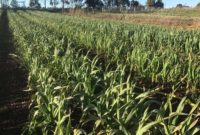Simcha Blass, an Israeli hydraulic engineer, is credited with the discovery and introduction of modern drip irrigation in the early 1930’s. Drip irrigation (also known as micro-irrigation) became more common with the introduction of plastics in the 1950’s. Plastic tubing provided an inexpensive, flexible means of delivering water to the root zone of plants and was widely used in greenhouses and for agriculture.
As improvements were made to the materials and problems such as clogging were resolved drip irrigation began to gain popularity for residential and small commercial applications. The relative simplicity of drip irrigation even made it possible for homeowners and other non-professionals to install it.

Benefits/Pros/Advantages of Drip Irrigation Systems
Drip irrigation is arguably the most efficient method of providing water to trees, crops, gardens and landscapes. The efficiency of overhead irrigation, such as rotors, and pop-up sprayheads is typically 50 percent and rarely exceeds 70 percent. The efficiency of a well-designed drip irrigation system can reach nearly 100 percent. Drip irrigation has numerous other benefits as well:
- It can be tailored to deliver the precise amount of water required by individual plants
- Evaporative losses are very low particularly when used in conjunction with mulch
- It is the best type of irrigation for windy conditions
- It uses less water since water is delivered only to the plants that need it
- It results in fewer weeds because the area between plants is not irrigated
- It reduces the incidence of foliar diseases
- It reduces or eliminates pollution from runoff
- It improves plant health by delivering fertilizer, and other chemicals precisely where they are needed
- It improves plant health by reducing fluctuations in soil moisture
- Its flexibility allows the system to adapt as plants grow or are added or removed
- It is well adapted for a wide variety of soil conditions and terrain
- It is often exempt from watering restrictions because it is so efficient
- Large areas can be watered all at once because of its low flow rate
- Installation and maintenance costs are typically much lower than for that of an underground sprinkler system
- It operates at pressures between 15 and 30 psi eliminating the need for a booster pump in low pressure systems
Disadvantages/Cons/Drawbacks of Drip Irrigation Systems
Some contractors are reluctant to use drip irrigation despite its many advantages. The reason most commonly cited is the inability to see if it is working. Not only is there no obvious spray pattern as with overhead irrigation – drip irrigation is typically covered by a layer of mulch several inches thick. Other disadvantages include:
- Subject to damage from other landscaping activities
- Subject to chewing damage from rodents
- Subject to vandalism, particularly in areas that haven’t been mulched
- Can present a tripping hazard for children and pets (anchoring tubing and covering with mulch can reduce this problem)
- Emitters can become clogged effectively shutting off water to portions of the landscape (improvements to system filtration and self-cleaning emitters have eliminated many of these problems)
- Can limit plan root growth to wetted drip area
